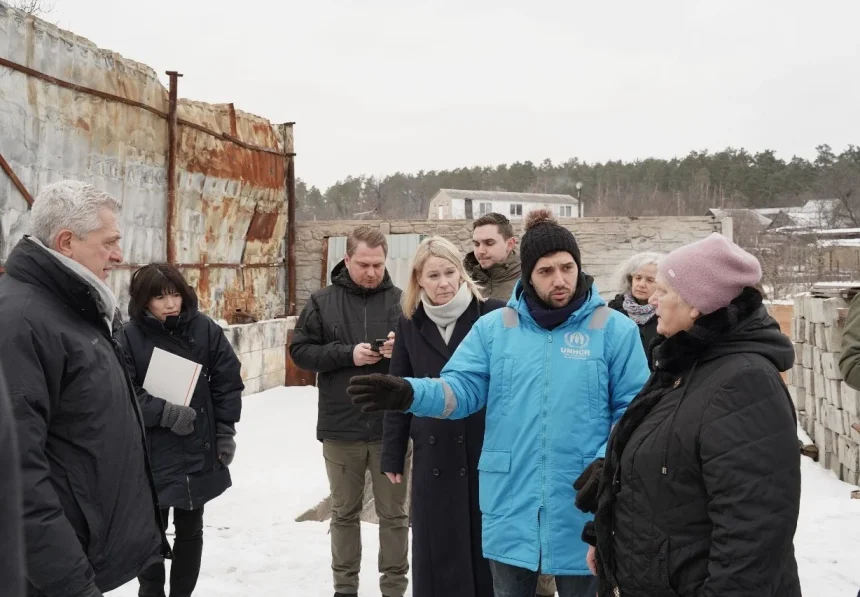The United Nations refugee agency is not just repairing homes damaged by Russian attacks in Ukraine—they’re committed to rebuilding them to a higher standard than before the war, says project lead Richard Evans.
Richard Evans, the emergency shelter and housing lead for the United Nations High Commissioner for Refugees (UNHCR), is at the forefront of efforts to restore homes devastated by the war triggered by Russia’s invasion in February 2022. While the task of rebuilding homes is monumental, Evans is determined to go beyond mere restoration, aiming to improve the quality of housing across Ukraine.
READ ALSO: Ukraine Signs Memorandum with World Bank to Enhance Housing Market
“We are trying to improve the housing stock as we go,” Evans told Dezeen in an interview, highlighting the importance of not just repairing but upgrading homes to meet modern standards.
According to the World Bank’s latest rapid damage and needs assessment, more than two million housing units in Ukraine have been destroyed or damaged since the onset of the conflict. Despite continued rocket attacks and other hostilities, the UNHCR has repaired over 29,000 private homes, offering a glimmer of hope to those affected.
Evans explained that many homes in Ukraine were in poor condition even before the war, often dating back to the Soviet era with little to no updates. This reality has driven the UNHCR to build back better, incorporating modern amenities such as triple-glazed windows and insulation to protect residents from harsh winters.
READ ALSO: UK prime Minister promises to relaunch Help to Buy housing scheme
“Ukraine had a shortage of affordable and adequate housing before the war,” Evans noted, emphasizing the need to raise the living standards in the country. “The majority of the housing stock was very old—80 percent of the buildings were built during the Soviet era, and 40 percent of Ukrainians were living in houses that had never been renovated.”
In addition to rebuilding, the UNHCR has employed multiple methods to give Ukrainians some control over how they receive aid. Homeowners can choose to self-repair with provided materials, hire contractors with financial aid from the UNHCR, or have the UNHCR organize the repairs directly.
For homes that have been completely destroyed, the UNHCR’s CoreHome program collaborates with Ukrainian manufacturers to build prefabricated homes on the homeowners’ land, allowing families to remain on their property while their homes are rebuilt.
READ ALSO: Premium Bread Makers Association of Nigeria Attributes Price Increase to Exchange Rate Volatility
Evans also addressed the challenges faced by nearly four million internally displaced people in Ukraine. The UNHCR has worked on nearly 250 collective sites, such as university accommodations, to make them more suitable for long-term living. However, Evans stressed the need for more sustainable housing solutions, advocating for social housing and affordable homes to address the long-term needs of displaced Ukrainians.
Through these initiatives, the UNHCR is not only providing immediate relief but also laying the groundwork for a more resilient future in Ukraine. As Evans puts it, the goal is to find “durable solutions” that offer displaced people a stable, long-term living arrangement, whether that means returning home or integrating into new communities.



